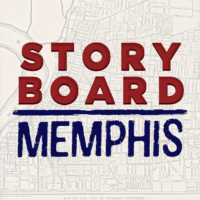BLUES RECORDS AND MUSIC INVENTORY

Dating back to the early 1920s, A. Schwab was one of the first stores in the United States to sell Blues records, referred to in some circles as “race records.” Here, each document and request for vinyl records contains stories of their own.
There are letters and invoices to and from such iconic record companies as American, Bluebird, Decca, and more. There is even a request in the collection from Tennessee State Penitentiary in Nashville: a letter from an inmate to A. Schwab ordering records by Washboard Sam and Band, Al Cooper’s Savoy Sultans, and Sleepy John Estes, with the request to “please send us one of your laties [sic] records list.”
Within the documents, one can trace the development of sales and the record industry in general. For example, one of the earliest letters from Schwab to Danon Record Co. Includes a request for “six records for reproducing on and from a needle machine. We want flat, disk records”. Browse highlights from the collection below.
Bluebird inventory totals, 1939
Bluebird was the most successful of RCA Victor’s “Budget Labels,” which were marketed to teens and other low-income markets during the Great Depression. Artists often preferred to record with the cheaper Bluebird label because they wanted their music to be more accessible to fans.
The “race records” category first appeared in the main RCA Victor catalog in the 1920s. African American blues, gospel, and ragtime records were sold at full price before moving to the discounted Bluebird label in 1933. Throughout the 1930s, Bluebird’s album sales increased from 1.3 million at the beginning of the decade to 23.4 million by 1941!
While digitizing a batch of 1938/1939 invoices, archivist Kimberly Bradshaw matched the catalog numbers to a Bluebird discography to see what musicians were popular among A. Schwab customers. We’ve compiled a Spotify Playlist to give you a taste of what Memphians were requesting back in the late 1930s. Check out the playlist here!


















